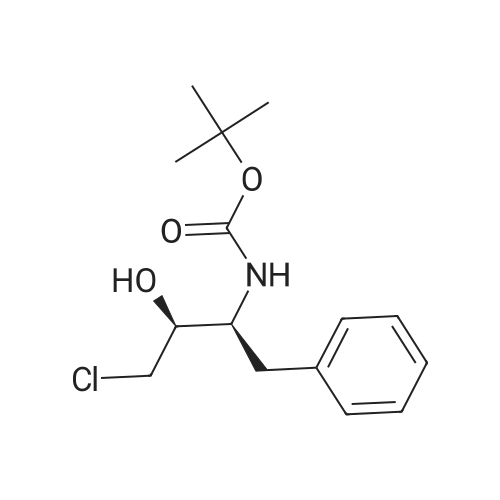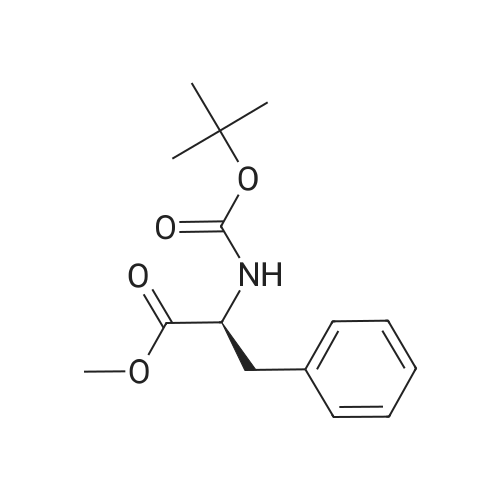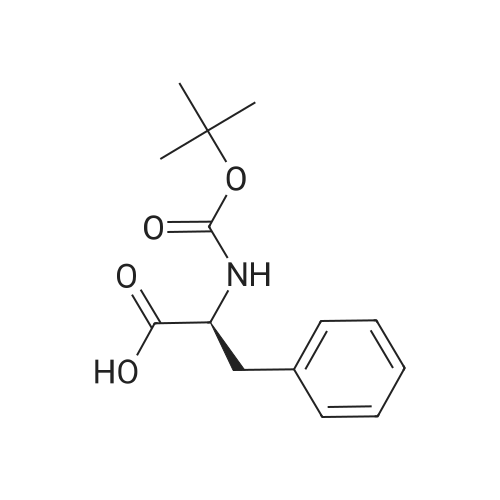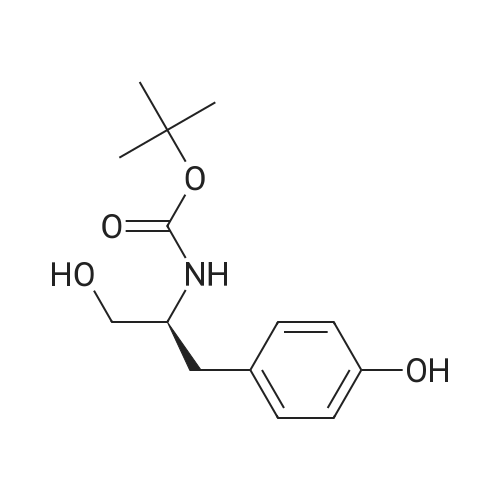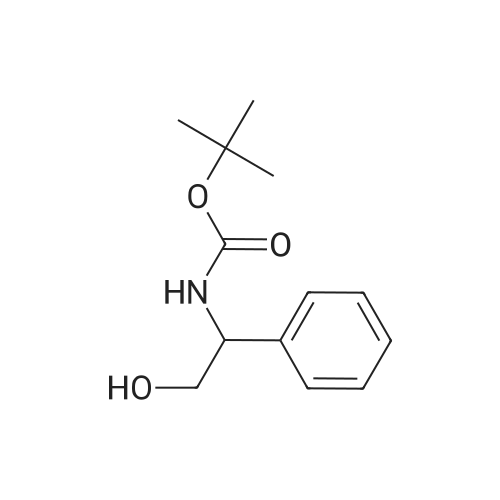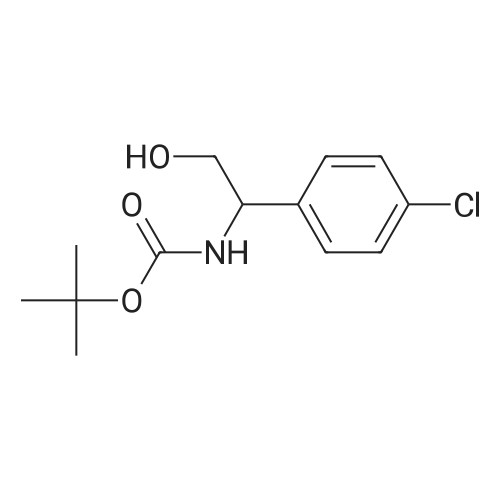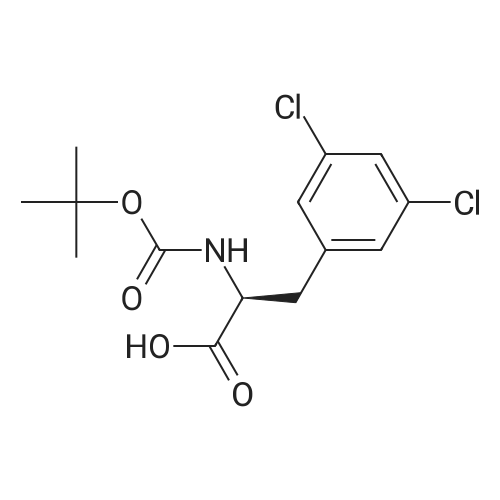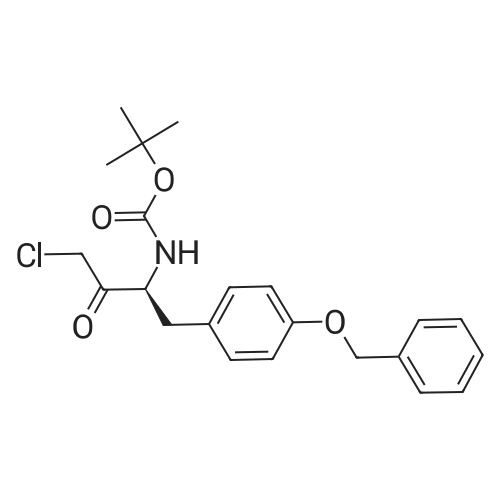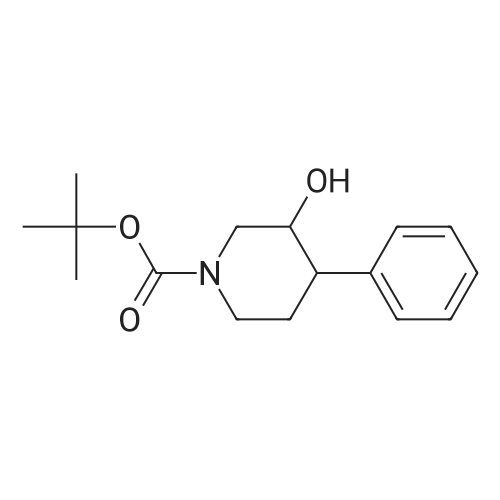|
With hydrogen;dichloro(benzene)ruthenium(II) dimer; C43H40FeNP2; In ethanol; at 55℃; under 4500.45 Torr; for 20h;Argonaut Endeavour hydrogenation unit;Product distribution / selectivity; |
Further screening was carried out using the following ligands:In a 10ml Schlenk flask (set under an atmosphere of argon) metal precursor (1 equiv) and ligand (1.05 equivalents) were placed and dissolved in 1 ml of freshly distilled solvent. The solution was stirred at room temperature for 30 minutes. BOC Chloroketone was dissolved in solvent to give a 0.5M solution in a tube suitable for parallel screening. The catalyst solution was transferred into the tube and placed in parallel reactor. The autoclave was closed, set under the desired hydrogen pressure and temperature was adjusted to the desired value. After the given reaction time, the reaction was stopped and a sample of the reaction mixture was diluted and directly analyzed by HPLC. Some results of this study are shown in Table 13.Table 13S/cMetalLigandAbs ConfSolt (h)P (bar)T °CProdsmde1250Ru"A(R)-(S)EtOH20655100092percent2250Ru*B(R)-(S)EtOH1866595590percent3100Ru*C(S)-(R)EtOH184062901096percent4250Ru*D(R)EtOH184062712996percentRu* [RuCI2(p-cymene)]2 RuUSD [Rul2(p-cymene)]2 |
|
With hydrogen;(R)MeBoPhoz-RuCl2-PPh3; sodium acetate; In ethanol; at 55℃; under 7498.84 Torr; for 18h;Endeavor catalyst system;Product distribution / selectivity; |
The Some results of study of effect of additives on the reaction are summarised in Tables 8, 8a and 8bTable 8 Asymmetric Hydrogenation of BocChloroketone using (R)MeBoPhoz-RuCI2-PPh3 with different additives (20 molpercent)Entry _ Additive Conv. (percent) de (percent)~1.........."........."................~ .................~...........">98.............. ~93~........2 MgBr2.OEt 75 93.53 NH4CI 60 934 Na(C02CF3) >99 93C5 Ag(OTf)2 31 906 AgBF4 157 NaOAc 16.5 83a Reaction conditions: Endeavor catalyst system; EtOH (2 ml/mmol), H2 (145 psi), 55 °C, 18 hrs. Conversion and de measured by chiral HPLC.c reaction complete after 5 hrs. |
|
With hydrogen;(R)MeBoPhoz-RuCl2-dmf; sodium 2,2,2-trifluoroacetate; In ethanol; at 55℃; under 7498.84 Torr; for 18h;Endeavor catalyst system;Product distribution / selectivity; |
Table 8a. Asymmetric hydrogenation of BocChloroketone using BoPhoz-Ru catalysts with different levels of sodium trifluoroacetate as additive.3Entry CatalystNa(C02CF3) Conv. (percent) de (percent)1 (R)MeBoPhoz-RuCI2- PPh3234567 p-F-Ph-(f?)MeBoPhoz-RuCI2-dmf8(molpercent)-7392.5599931097932090915081.59010044872.5>9993.55>9993.5Reaction conditions: Endeavor catalyst system; s/c 1000, 12h, EtOH (2 ml/mmol), H2 (145 psi), 55 °C. Conversion analysed by HPLC, de measured by chiral HPLC.Table 8b. Asymmetric hydrogenation of BocChloroketone using BoPhoz-Ru catalysts with sodium trifluoroacetate as additive under different conditions.3EntryCatalystNa(TFA):S/cTempConv.deCatalyst(°C)(percent)(percent)1(/?)MeBoPhoz-RuCI2-dmf-10005582922u25:11000559892.43a50:110005599944p-F-Ph-(/?)MeBoPhoz-RuCI2-dmf25:11000559994525:11000459994625:11000359394725:11500559994825:12000559894950:120005578941025:12500559592a Reaction conditions: Endeavor catalyst system; 18h, EtOH (2 ml/mmol), H2 (145 psi), Na(TFA):Catalyst molar ratio. Conversion analysed by HPLC, de measured by chiral HPLC. |
|
With hydrogen;(R)MeBoPhoz-RuCl2-PPh3; sodium 2,2,2-trifluoroacetate; In ethanol; at 55℃; under 7498.84 Torr; for 5 - 12h;Endeavor catalyst system;Product distribution / selectivity; |
The Some results of study of effect of additives on the reaction are summarised in Tables 8, 8a and 8bTable 8 Asymmetric Hydrogenation of BocChloroketone using (R)MeBoPhoz-RuCI2-PPh3 with different additives (20 molpercent)Entry _ Additive Conv. (percent) de (percent)~1.........."........."................~ .................~...........">98.............. ~93~........2 MgBr2.OEt 75 93.53 NH4CI 60 934 Na(C02CF3) >99 93C5 Ag(OTf)2 31 906 AgBF4 157 NaOAc 16.5 83a Reaction conditions: Endeavor catalyst system; EtOH (2 ml/mmol), H2 (145 psi), 55 °C, 18 hrs. Conversion and de measured by chiral HPLC.c reaction complete after 5 hrs.; Table 8a. Asymmetric hydrogenation of BocChloroketone using BoPhoz-Ru catalysts with different levels of sodium trifluoroacetate as additive.3Entry CatalystNa(C02CF3) Conv. (percent) de (percent)1 (R)MeBoPhoz-RuCI2- PPh3234567 p-F-Ph-(f?)MeBoPhoz-RuCI2-dmf8(molpercent)-7392.5599931097932090915081.59010044872.5>9993.55>9993.5Reaction conditions: Endeavor catalyst system; s/c 1000, 12h, EtOH (2 ml/mmol), H2 (145 psi), 55 °C. Conversion analysed by HPLC, de measured by chiral HPLC. |
|
With hydrogen;p-fluorophenyl (R)-MeBoPhoz-RuCl2-dmf; sodium 2,2,2-trifluoroacetate; In ethanol; at 45 - 55℃; under 7498.84 Torr; for 12 - 18h;Endeavor catalyst system;Product distribution / selectivity; |
Table 8a. Asymmetric hydrogenation of BocChloroketone using BoPhoz-Ru catalysts with different levels of sodium trifluoroacetate as additive.3Entry CatalystNa(C02CF3) Conv. (percent) de (percent)1 (R)MeBoPhoz-RuCI2- PPh3234567 p-F-Ph-(f?)MeBoPhoz-RuCI2-dmf8(molpercent)-7392.5599931097932090915081.59010044872.5>9993.55>9993.5Reaction conditions: Endeavor catalyst system; s/c 1000, 12h, EtOH (2 ml/mmol), H2 (145 psi), 55 °C. Conversion analysed by HPLC, de measured by chiral HPLC.Table 8b. Asymmetric hydrogenation of BocChloroketone using BoPhoz-Ru catalysts with sodium trifluoroacetate as additive under different conditions.3EntryCatalystNa(TFA):S/cTempConv.deCatalyst(°C)(percent)(percent)1(/?)MeBoPhoz-RuCI2-dmf-10005582922u25:11000559892.43a50:110005599944p-F-Ph-(/?)MeBoPhoz-RuCI2-dmf25:11000559994525:11000459994625:11000359394725:11500559994825:12000559894950:120005578941025:12500559592a Reaction conditions: Endeavor catalyst system; 18h, EtOH (2 ml/mmol), H2 (145 psi), Na(TFA):Catalyst molar ratio. Conversion analysed by HPLC, de measured by chiral HPLC. |
|
With hydrogen;p-fluorophenyl (R)-MeBoPhoz-RuCl2-dmf; sodium 2,2,2-trifluoroacetate; In ethanol; at 40 - 48℃; under 7498.84 Torr; for 18h;Parr autoclave;Product distribution / selectivity; |
To a 50 ml Glass liner was added catalyst (5.4mg, 6umol s/c 1000; or 2.7mg, 3 umol, s/c 2000), sodium trifluoroacetate (20.4 mg, 0.15mmol, s/clOOO; or 10.2mg, 0.075mmol, s/c 2000) and substrate (1.79 g, 6 mmol). This was placed in theautoclave and the flushed with Nitrogen. Ethanol (12 ml) was added to the autoclave. The autoclave was placed in an oil bath (oil bath temperature 69°C) and left to equilibrate for 10 minutes. The autoclave was then pressurised with hydrogen (10 bar) and left for 18 hrs. The internal temperature of the autoclave was measured as being 40°C. A pressure drop of 50 psi was noted over 18 hrs. The autoclave was removed from the oil bath, cooled, depressurised and the contents analysed by HPLC. The results of this and a similar study are shown in Table 9.Table 9.Entry Catalyst Na(TFA): s/c Temp Conv. de _______________________________Catalyst________.pound.c.pound.____(percent)_____{percent)_ p-F-Ph-(R)MeBoPhoz-RuCI2 QO fto1 dmf 25:1 1000 48 88 922 " 25:1 2000 40 96 94a Reaction conditions: 50 ml Parr Autoclave; 18h, EtOH (2 ml/mmol), H2 (145 psi), Na(TFA):Catalyst molar ratio.b Internal temperature of autoclave measured using temperature probe inserted into sampling well of autoclave. Conversion analysed by HPLC, de measured by chiral HPLC.; Example 10Influence of Pressure on Asymmetric Hvdrogenation of BocChloroketone using BoPhoz-Ru catalysts.Some results of this study are shown in Table 10 and 10a.Table 10Entry Catalyst S/c Pressure Conv. (percent) De (percent)(psi). (^MeBoPho^RuCb-dmf TOOO 702 (R)MeBoPhoz-RuCI2-dmf 1000 1453 p-F-Ph-(f?)MeBoPhoz-RuCI2 dmf 1000 704 p-F-Ph-(R)MeBoPhoz-RuCI2 dmf 1000 1459494989398969894Reaction conditions: Endeavor catalyst system; EtOH (2 ml/mmol), H2, 55 °C. Conversion analysed by HPLC, de measured by chiral HPLC.Table 10a. Asymmetric hydrogenation of BocChloroketone using BoPhoz-Ru catalysts with sodium trifluoroacetate as additive using a 50 ml Parr autoclave.3Entry Catalyst Na(TFA): s/c Temp Conv. de_ Catalyst _ _ (°Cf _ (percent) (percent)".....................p^RH^MeBoPhoz-RuCb....."~..........~............."................"..................................dmf 2 325:110004888vz25:1200040969425:12500459393 |
|
With hydrogen;(R)-[RuCl(benzene)(MeBoPhoz)]Cl; sodium 2,2,2-trifluoroacetate; In ethanol; at 55℃; under 3420.23 Torr; for 41h;Parr autoclave;Product distribution / selectivity; |
A Parr vessel was charged with (R)-[RuCI(benzene)(MeBoPhoz)]CI (98mg), sodium trifluoroacetate (366mg) and (3S)-3-t-butoxycarbonylamino-1-chloro-4-phenyl-2-butanone (33g) and 220ml of degassed ethanol. After purging cycle,the vessel was heated to 55°C and pressurised with hydrogen to 4.5 atm. After completion of reaction (41 h), HPLC analysis showed 96.5percent conversion and a 93.7percent de in favour of the desired (2R.3S) chloroalcohol. |
|
With hydrogen;(R)MeBoPhoz-RuCl2-PPh3; ammonium chloride; In ethanol; at 55℃; under 7498.84 Torr; for 18h;Endeavor catalyst system;Product distribution / selectivity; |
The Some results of study of effect of additives on the reaction are summarised in Tables 8, 8a and 8bTable 8 Asymmetric Hydrogenation of BocChloroketone using (R)MeBoPhoz-RuCI2-PPh3 with different additives (20 molpercent)Entry _ Additive Conv. (percent) de (percent)~1.........."........."................~ .................~...........">98.............. ~93~........2 MgBr2.OEt 75 93.53 NH4CI 60 934 Na(C02CF3) >99 93C5 Ag(OTf)2 31 906 AgBF4 157 NaOAc 16.5 83a Reaction conditions: Endeavor catalyst system; EtOH (2 ml/mmol), H2 (145 psi), 55 °C, 18 hrs. Conversion and de measured by chiral HPLC.c reaction complete after 5 hrs. |
|
With hydrogen;(R)MeBoPhoz-RuCl2-PPh3; magnesium bromide ethyl etherate; In ethanol; at 55℃; under 7498.84 Torr; for 18h;Endeavor catalyst system;Product distribution / selectivity; |
The Some results of study of effect of additives on the reaction are summarised in Tables 8, 8a and 8bTable 8 Asymmetric Hydrogenation of BocChloroketone using (R)MeBoPhoz-RuCI2-PPh3 with different additives (20 molpercent)Entry _ Additive Conv. (percent) de (percent)~1.........."........."................~ .................~...........">98.............. ~93~........2 MgBr2.OEt 75 93.53 NH4CI 60 934 Na(C02CF3) >99 93C5 Ag(OTf)2 31 906 AgBF4 157 NaOAc 16.5 83a Reaction conditions: Endeavor catalyst system; EtOH (2 ml/mmol), H2 (145 psi), 55 °C, 18 hrs. Conversion and de measured by chiral HPLC.c reaction complete after 5 hrs. |
|
With hydrogen;Ru-(R)-Me-BoPhoz-Cl2(dmf)2; In ethanol; butan-1-ol; at 50℃; under 7500.75 Torr; for 20h;Argonaut Endeavour hydrogenation unit;Product distribution / selectivity; |
Some results of this study are shown in Table 4; Table 4.EntrySolventConv (percent) (HPLC)Product (HPLC)d.e (percent)config11-BuOH>99942R,3S2MeOH46932R,3S3EtOH82942R.3S41-PrOH63942R.3S52-PrOH23952R.3S6EtOH/1-BuOH = 1/192942R,3S7EtOH/1-BuOH =3/179942R.3S8bEtOH/DCM =3/1I 90b93.52R,3S9DCE3--10THF---Reactionconditions: 1mmol BocChoroketone, S/Cratio = 750/1,0.0013mmolcatalyst, 6mL solvent, 50°C, 10 bar, reaction time 20 hrs.b 1mmol substrate, S/C ratio = 750/1, 0.0013mmol catalyst, 6mL solvent, 50°C, 10 bar, reaction time 20 hrs, reaction performed in a Parr reactor. |
|
With hydrogen;Ru-(R)-Me-BoPhoz-Cl2(dmf)2; In butan-1-ol; at 50℃; under 7500.75 Torr; for 20h;Argonaut Endeavour hydrogenation unit;Product distribution / selectivity; |
A series of experiments were carried out with an aforementioned ligand and with the following ligands coordinated to ruthenium:; Some results of this study are shown in Table 3; Table 3.EntryCatalystS/CTime (h)Conv(percent) (HPLC)Product (HPLC)d.e (percent)config1aRu-(S)-Xyl-P-Phos-Ci2(dmf)25002055932R3S2aRu-(f?)-Me-BoPhoz-CI2(dmf)250020>99942R,3S3bRu-(f?)-Me-BoPhoz-CI2(dmf)27502496b942R,3S4CRu-(R)-Me-BoPhoz-CI2(dmf)210004894° 942R.3S5aRu-(R)-Et-BoPhoz-CI2(dmf)25002096 | 88.52R,3Sa) 0.5mmol BocChloroketone, S/C = 500/1, 3mL 1-BuOH, O.OOImmol catalyst, 50°C, 10bar H2, 20 hrs;b) 1mmol BocChloroketone, S/C = 750/1, 6mL 1-BuOH, 0.0013mmol catalyst, 50-55°C, 10bar H2, 24 hrs, reaction performed in a Parr reactor;c) 1mmol BocChloroketone, S/C = 1000/1, 6mL 1-BuOH, O.OOImmol catalyst, 50-55°C, 10bar H2, 48hrs, reaction performed in a Parr reactor.; Example 4 Influence of the solvent on the Ru-(ffl-Me-BoPhoz-CI?fclmf)rcatalyzed asymmetric hvdroqenation of BocChloroketone; Some results of this study are shown in Table 4;Table 4.EntrySolventConv (percent) (HPLC)Product (HPLC)d.e (percent)config11-BuOH>99942R,3S2MeOH46932R,3S3EtOH82942R.3S41-PrOH63942R.3S52-PrOH23952R.3S6EtOH/1-BuOH = 1/192942R,3S7EtOH/1-BuOH =3/179942R.3S8bEtOH/DCM =3/1I 90b93.52R,3S9DCE3--10THF---Reactionconditions: 1mmol BocChoroketone, S/Cratio = 750/1,0.0013mmolcatalyst, 6mL solvent, 50°C, 10 bar, reaction time 20 hrs.b 1mmol substrate, S/C ratio = 750/1, 0.0013mmol catalyst, 6mL solvent, 50°C, 10 bar, reaction time 20 hrs, reaction performed in a Parr reactor.; Example 5Influence of the substrate concentration on the hvdrogenation of BocChloroketone using Ru-fffl-MeBoPhoz-CUdmfl? catalystSome results of this study are shown in Table 5; Table 5.EntrySolventSubs. Cone. (mmol/mL)Conv (percent) (HPLC)Product (HPLC)d.e (percent)config11-BuOH0.1799942R3S21-BuOH0.3368942R,3S3EtOH0.1782942R3S4EtOH0.3389932R.3S5EtOH0.59993.52R,3S6EtOH7cn irr>0^ nnu-, L0.6696932R,3S |
|
With hydrogen;Ru-(R)-Me-BoPhoz-Cl2(dmf)2; In butan-1-ol; at 50 - 55℃; under 7500.75 Torr; for 24 - 48h;Parr reactor;Product distribution / selectivity; |
A series of experiments were carried out with an aforementioned ligand and with the following ligands coordinated to ruthenium:; Some results of this study are shown in Table 3; Table 3.EntryCatalystS/CTime (h)Conv(percent) (HPLC)Product (HPLC)d.e (percent)config1aRu-(S)-Xyl-P-Phos-Ci2(dmf)25002055932R3S2aRu-(f?)-Me-BoPhoz-CI2(dmf)250020>99942R,3S3bRu-(f?)-Me-BoPhoz-CI2(dmf)27502496b942R,3S4CRu-(R)-Me-BoPhoz-CI2(dmf)210004894° 942R.3S5aRu-(R)-Et-BoPhoz-CI2(dmf)25002096 | 88.52R,3Sa) 0.5mmol BocChloroketone, S/C = 500/1, 3mL 1-BuOH, O.OOImmol catalyst, 50°C, 10bar H2, 20 hrs;b) 1mmol BocChloroketone, S/C = 750/1, 6mL 1-BuOH, 0.0013mmol catalyst, 50-55°C, 10bar H2, 24 hrs, reaction performed in a Parr reactor;c) 1mmol BocChloroketone, S/C = 1000/1, 6mL 1-BuOH, O.OOImmol catalyst, 50-55°C, 10bar H2, 48hrs, reaction performed in a Parr reactor. |
|
With hydrogen;Ru-(R)-Me-BoPhoz-Cl2(dmf)2; In ethanol; dichloromethane; at 50℃; under 7500.75 Torr; for 20h;Parr reactor;Product distribution / selectivity; |
Some results of this study are shown in Table 4; Table 4.EntrySolventConv (percent) (HPLC)Product (HPLC)d.e (percent)config11-BuOH>99942R,3S2MeOH46932R,3S3EtOH82942R.3S41-PrOH63942R.3S52-PrOH23952R.3S6EtOH/1-BuOH = 1/192942R,3S7EtOH/1-BuOH =3/179942R.3S8bEtOH/DCM =3/1I 90b93.52R,3S9DCE3--10THF---Reactionconditions: 1mmol BocChoroketone, S/Cratio = 750/1,0.0013mmolcatalyst, 6mL solvent, 50°C, 10 bar, reaction time 20 hrs.b 1mmol substrate, S/C ratio = 750/1, 0.0013mmol catalyst, 6mL solvent, 50°C, 10 bar, reaction time 20 hrs, reaction performed in a Parr reactor. |
|
With hydrogen;Ru-(R)-Me-BoPhoz-Cl2(dmf)2; In isopropyl alcohol; at 50℃; under 7500.75 Torr; for 20h;Argonaut Endeavour hydrogenation unit;Product distribution / selectivity; |
Some results of this study are shown in Table 4; Table 4.EntrySolventConv (percent) (HPLC)Product (HPLC)d.e (percent)config11-BuOH>99942R,3S2MeOH46932R,3S3EtOH82942R.3S41-PrOH63942R.3S52-PrOH23952R.3S6EtOH/1-BuOH = 1/192942R,3S7EtOH/1-BuOH =3/179942R.3S8bEtOH/DCM =3/1I 90b93.52R,3S9DCE3--10THF---Reactionconditions: 1mmol BocChoroketone, S/Cratio = 750/1,0.0013mmolcatalyst, 6mL solvent, 50°C, 10 bar, reaction time 20 hrs.b 1mmol substrate, S/C ratio = 750/1, 0.0013mmol catalyst, 6mL solvent, 50°C, 10 bar, reaction time 20 hrs, reaction performed in a Parr reactor. |
|
With hydrogen;Ru-(R)-Me-BoPhoz-Cl2(dmf)2; In ethanol; at 50℃; under 7500.75 Torr; for 20h;Argonaut Endeavour hydrogenation unit;Product distribution / selectivity; |
Some results of this study are shown in Table 4; Table 4.EntrySolventConv (percent) (HPLC)Product (HPLC)d.e (percent)config11-BuOH>99942R,3S2MeOH46932R,3S3EtOH82942R.3S41-PrOH63942R.3S52-PrOH23952R.3S6EtOH/1-BuOH = 1/192942R,3S7EtOH/1-BuOH =3/179942R.3S8bEtOH/DCM =3/1I 90b93.52R,3S9DCE3--10THF---Reactionconditions: 1mmol BocChoroketone, S/Cratio = 750/1,0.0013mmolcatalyst, 6mL solvent, 50°C, 10 bar, reaction time 20 hrs.b 1mmol substrate, S/C ratio = 750/1, 0.0013mmol catalyst, 6mL solvent, 50°C, 10 bar, reaction time 20 hrs, reaction performed in a Parr reactor.; Example 5Influence of the substrate concentration on the hvdrogenation of BocChloroketone using Ru-fffl-MeBoPhoz-CUdmfl? catalystSome results of this study are shown in Table 5; Table 5.EntrySolventSubs. Cone. (mmol/mL)Conv (percent) (HPLC)Product (HPLC)d.e (percent)config11-BuOH0.1799942R3S21-BuOH0.3368942R,3S3EtOH0.1782942R3S4EtOH0.3389932R.3S5EtOH0.59993.52R,3S6EtOH7cn irr>0^ nnu-, L0.6696932R,3S |
|
With hydrogen;Ru-(R)-Me-BoPhoz-Cl2(dmf)2; In propan-1-ol; at 50℃; under 7500.75 Torr; for 20h;Argonaut Endeavour hydrogenation unit;Product distribution / selectivity; |
Some results of this study are shown in Table 4; Table 4.EntrySolventConv (percent) (HPLC)Product (HPLC)d.e (percent)config11-BuOH>99942R,3S2MeOH46932R,3S3EtOH82942R.3S41-PrOH63942R.3S52-PrOH23952R.3S6EtOH/1-BuOH = 1/192942R,3S7EtOH/1-BuOH =3/179942R.3S8bEtOH/DCM =3/1I 90b93.52R,3S9DCE3--10THF---Reactionconditions: 1mmol BocChoroketone, S/Cratio = 750/1,0.0013mmolcatalyst, 6mL solvent, 50°C, 10 bar, reaction time 20 hrs.b 1mmol substrate, S/C ratio = 750/1, 0.0013mmol catalyst, 6mL solvent, 50°C, 10 bar, reaction time 20 hrs, reaction performed in a Parr reactor. |
|
With hydrogen;Ru-(R)-Me-BoPhoz-Cl2(dmf)2; In methanol; at 50℃; under 7500.75 Torr; for 20h;Argonaut Endeavour hydrogenation unit;Product distribution / selectivity; |
Some results of this study are shown in Table 4; Table 4.EntrySolventConv (percent) (HPLC)Product (HPLC)d.e (percent)config11-BuOH>99942R,3S2MeOH46932R,3S3EtOH82942R.3S41-PrOH63942R.3S52-PrOH23952R.3S6EtOH/1-BuOH = 1/192942R,3S7EtOH/1-BuOH =3/179942R.3S8bEtOH/DCM =3/1I 90b93.52R,3S9DCE3--10THF---Reactionconditions: 1mmol BocChoroketone, S/Cratio = 750/1,0.0013mmolcatalyst, 6mL solvent, 50°C, 10 bar, reaction time 20 hrs.b 1mmol substrate, S/C ratio = 750/1, 0.0013mmol catalyst, 6mL solvent, 50°C, 10 bar, reaction time 20 hrs, reaction performed in a Parr reactor. |
|
With hydrogen;Ru-(R)-Et-BoPhoz-Cl2(dmf)2; In butan-1-ol; at 50℃; under 7500.75 Torr; for 20h;Argonaut Endeavour hydrogenation unit;Product distribution / selectivity; |
A series of experiments were carried out with an aforementioned ligand and with the following ligands coordinated to ruthenium:; Some results of this study are shown in Table 3; Table 3.EntryCatalystS/CTime (h)Conv(percent) (HPLC)Product (HPLC)d.e (percent)config1aRu-(S)-Xyl-P-Phos-Ci2(dmf)25002055932R3S2aRu-(f?)-Me-BoPhoz-CI2(dmf)250020>99942R,3S3bRu-(f?)-Me-BoPhoz-CI2(dmf)27502496b942R,3S4CRu-(R)-Me-BoPhoz-CI2(dmf)210004894° 942R.3S5aRu-(R)-Et-BoPhoz-CI2(dmf)25002096 | 88.52R,3Sa) 0.5mmol BocChloroketone, S/C = 500/1, 3mL 1-BuOH, O.OOImmol catalyst, 50°C, 10bar H2, 20 hrs;b) 1mmol BocChloroketone, S/C = 750/1, 6mL 1-BuOH, 0.0013mmol catalyst, 50-55°C, 10bar H2, 24 hrs, reaction performed in a Parr reactor;c) 1mmol BocChloroketone, S/C = 1000/1, 6mL 1-BuOH, O.OOImmol catalyst, 50-55°C, 10bar H2, 48hrs, reaction performed in a Parr reactor. |
|
With hydrogen;(R)MeBoPhoz-RuCl2-dmf; In ethanol; at 55℃; under 3620.13 - 7498.84 Torr;Endeavor catalyst system;Product distribution / selectivity; |
A series of experiments were carried out certain BoPhoz ligands coordinated to ruthenium. Some results of this study are shown in Table 6.Table 6EntryCatalystS/c _Time Conv. (percent) de (percent)1 (R)MeBoPhoz-RuCI2-dmf2 (R)MeBoPhoz-RuCI2-PPh33 (R)MeBoPhoz-RuCI2-dmf4 (R)MeBoPhoz-RuCI2-dmf5 (R)MeBoPhoz-Ru (acac)26 (R)MeBoPhoz-RuCI2 (TFA)250018>999350018>9992.5100056>9993100056899210001855921000186988Reaction conditions: Endeavor catalyst system; EtOH (2 ml/mmol), H2(145 psi), 55 oC. Conversion analysed by HPLC, de measured by chiralHPLC. Example 10Influence of Pressure on Asymmetric Hvdrogenation of BocChloroketone using BoPhoz-Ru catalysts.Some results of this study are shown in Table 10 and 10a.Table 10Entry Catalyst S/c Pressure Conv. (percent) De (percent)(psi). (^MeBoPho^RuCb-dmf TOOO 702 (R)MeBoPhoz-RuCI2-dmf 1000 1453 p-F-Ph-(f?)MeBoPhoz-RuCI2 dmf 1000 704 p-F-Ph-(R)MeBoPhoz-RuCI2 dmf 1000 1459494989398969894Reaction conditions: Endeavor catalyst system; EtOH (2 ml/mmol), H2, 55 °C. Conversion analysed by HPLC, de measured by chiral HPLC.Table 10a. Asymmetric hydrogenation of BocChloroketone using BoPhoz-Ru catalysts with sodium trifluoroacetate as additive using a 50 ml Parr autoclave.3Entry Catalyst Na(TFA): s/c Temp Conv. de_ Catalyst _ _ (°Cf _ (percent) (percent)".....................p^RH^MeBoPhoz-RuCb....."~..........~............."................"..................................dmf 2 325:110004888vz25:1200040969425:12500459393 |
|
With hydrogen;silver trifluoromethanesulfonate; (R)MeBoPhoz-RuCl2-PPh3; In ethanol; at 55℃; under 7498.84 Torr; for 18h;Endeavor catalyst system;Product distribution / selectivity; |
The Some results of study of effect of additives on the reaction are summarised in Tables 8, 8a and 8bTable 8 Asymmetric Hydrogenation of BocChloroketone using (R)MeBoPhoz-RuCI2-PPh3 with different additives (20 molpercent)Entry _ Additive Conv. (percent) de (percent)~1.........."........."................~ .................~...........">98.............. ~93~........2 MgBr2.OEt 75 93.53 NH4CI 60 934 Na(C02CF3) >99 93C5 Ag(OTf)2 31 906 AgBF4 157 NaOAc 16.5 83a Reaction conditions: Endeavor catalyst system; EtOH (2 ml/mmol), H2 (145 psi), 55 °C, 18 hrs. Conversion and de measured by chiral HPLC.c reaction complete after 5 hrs. |
|
With hydrogen;(R)MeBoPhoz-RuCl2-PPh3; In ethanol; at 55℃; under 7498.84 Torr; for 18h;Endeavor catalyst system;Product distribution / selectivity; |
A series of experiments were carried out certain BoPhoz ligands coordinated to ruthenium. Some results of this study are shown in Table 6.Table 6EntryCatalystS/c _Time Conv. (percent) de (percent)1 (R)MeBoPhoz-RuCI2-dmf2 (R)MeBoPhoz-RuCI2-PPh33 (R)MeBoPhoz-RuCI2-dmf4 (R)MeBoPhoz-RuCI2-dmf5 (R)MeBoPhoz-Ru (acac)26 (R)MeBoPhoz-RuCI2 (TFA)250018>999350018>9992.5100056>9993100056899210001855921000186988Reaction conditions: Endeavor catalyst system; EtOH (2 ml/mmol), H2(145 psi), 55 oC. Conversion analysed by HPLC, de measured by chiralHPLC.; Example 8Asymmetric Hydrogenation of BocChloroketone using (/?)MeBoPhoz-RuCI?-PPhj with different additivesThe Some results of study of effect of additives on the reaction are summarised in Tables 8, 8a and 8bTable 8 Asymmetric Hydrogenation of BocChloroketone using (R)MeBoPhoz-RuCI2-PPh3 with different additives (20 molpercent)Entry _ Additive Conv. (percent) de (percent)~1.........."........."................~ .................~...........">98.............. ~93~........2 MgBr2.OEt 75 93.53 NH4CI 60 934 Na(C02CF3) >99 93C5 Ag(OTf)2 31 906 AgBF4 157 NaOAc 16.5 83a Reaction conditions: Endeavor catalyst system; EtOH (2 ml/mmol), H2 (145 psi), 55 °C, 18 hrs. Conversion and de measured by chiral HPLC.c reaction complete after 5 hrs. Table 8a. Asymmetric hydrogenation of BocChloroketone using BoPhoz-Ru catalysts with different levels of sodium trifluoroacetate as additive.3Entry CatalystNa(C02CF3) Conv. (percent) de (percent)1 (R)MeBoPhoz-RuCI2- PPh3234567 p-F-Ph-(f?)MeBoPhoz-RuCI2-dmf8(molpercent)-7392.5599931097932090915081.59010044872.5>9993.55>9993.5Reaction conditions: Endeavor catalyst system; s/c 1000, 12h, EtOH (2 ml/mmol), H2 (145 psi), 55 °C. Conversion analysed by HPLC, de measured by chiral HPLC. |
|
With hydrogen;(R)MeBoPhoz-Ru(acac)2; In ethanol; at 55℃; under 7498.84 Torr;Endeavor catalyst system;Product distribution / selectivity; |
A series of experiments were carried out certain BoPhoz ligands coordinated to ruthenium. Some results of this study are shown in Table 6.Table 6EntryCatalystS/c _Time Conv. (percent) de (percent)1 (R)MeBoPhoz-RuCI2-dmf2 (R)MeBoPhoz-RuCI2-PPh33 (R)MeBoPhoz-RuCI2-dmf4 (R)MeBoPhoz-RuCI2-dmf5 (R)MeBoPhoz-Ru (acac)26 (R)MeBoPhoz-RuCI2 (TFA)250018>999350018>9992.5100056>9993100056899210001855921000186988Reaction conditions: Endeavor catalyst system; EtOH (2 ml/mmol), H2(145 psi), 55 oC. Conversion analysed by HPLC, de measured by chiralHPLC. |
|
With hydrogen;(R)MeBoPhoz-RuCl2(TFA)2; In ethanol; at 55℃; under 7498.84 Torr;Endeavor catalyst system;Product distribution / selectivity; |
A series of experiments were carried out certain BoPhoz ligands coordinated to ruthenium. Some results of this study are shown in Table 6.Table 6EntryCatalystS/c _Time Conv. (percent) de (percent)1 (R)MeBoPhoz-RuCI2-dmf2 (R)MeBoPhoz-RuCI2-PPh33 (R)MeBoPhoz-RuCI2-dmf4 (R)MeBoPhoz-RuCI2-dmf5 (R)MeBoPhoz-Ru (acac)26 (R)MeBoPhoz-RuCI2 (TFA)250018>999350018>9992.5100056>9993100056899210001855921000186988Reaction conditions: Endeavor catalyst system; EtOH (2 ml/mmol), H2(145 psi), 55 oC. Conversion analysed by HPLC, de measured by chiralHPLC. |
|
With hydrogen;p-fluorophenyl (R)-MeBoPhoz-RuCl2-dmf; In ethanol; at 55℃; under 3620.13 - 7498.84 Torr;Endeavor catalyst system;Product distribution / selectivity; |
Some results of this study are shown in Table 7Table 7"Entry S/c fTrnT^oTr^r^r^M^T1 500 5 >99 942 1000 12 >99 93.53 2000 55 75 93; Reaction conditions: Endeavor catalyst system; EtOH (2 ml/mmol), H2(145 psi), 55 oC. Conversion analysed by HPLC, de measured by chiralHPLC.; Example 10Influence of Pressure on Asymmetric Hvdrogenation of BocChloroketone using BoPhoz-Ru catalysts.Some results of this study are shown in Table 10 and 10a.Table 10Entry Catalyst S/c Pressure Conv. (percent) De (percent)(psi). (^MeBoPho^RuCb-dmf TOOO 702 (R)MeBoPhoz-RuCI2-dmf 1000 1453 p-F-Ph-(f?)MeBoPhoz-RuCI2 dmf 1000 704 p-F-Ph-(R)MeBoPhoz-RuCI2 dmf 1000 1459494989398969894Reaction conditions: Endeavor catalyst system; EtOH (2 ml/mmol), H2, 55 °C. Conversion analysed by HPLC, de measured by chiral HPLC.Table 10a. Asymmetric hydrogenation of BocChloroketone using BoPhoz-Ru catalysts with sodium trifluoroacetate as additive using a 50 ml Parr autoclave.3Entry Catalyst Na(TFA): s/c Temp Conv. de_ Catalyst _ _ (°Cf _ (percent) (percent)".....................p^RH^MeBoPhoz-RuCb....."~..........~............."................"..................................dmf 2 325:110004888vz25:1200040969425:12500459393 |
|
With hydrogen;di-mu-iodobis{iodo(eta-benzene)ruthenium(II)}; C64H76FeN2O4P2; In ethanol; at 65℃; under 4500.45 Torr; for 18h;Argonaut Endeavour hydrogenation unit;Product distribution / selectivity; |
Further screening was carried out using the following ligands:In a 10ml Schlenk flask (set under an atmosphere of argon) metal precursor (1 equiv) and ligand (1.05 equivalents) were placed and dissolved in 1 ml of freshly distilled solvent. The solution was stirred at room temperature for 30 minutes. BOC Chloroketone was dissolved in solvent to give a 0.5M solution in a tube suitable for parallel screening. The catalyst solution was transferred into the tube and placed in parallel reactor. The autoclave was closed, set under the desired hydrogen pressure and temperature was adjusted to the desired value. After the given reaction time, the reaction was stopped and a sample of the reaction mixture was diluted and directly analyzed by HPLC. Some results of this study are shown in Table 13.Table 13S/cMetalLigandAbs ConfSolt (h)P (bar)T °CProdsmde1250Ru"A(R)-(S)EtOH20655100092percent2250Ru*B(R)-(S)EtOH1866595590percent3100Ru*C(S)-(R)EtOH184062901096percent4250Ru*D(R)EtOH184062712996percentRu* [RuCI2(p-cymene)]2 RuUSD [Rul2(p-cymene)]2 |
|
With hydrogen;di-mu-iodobis{iodo(eta-benzene)ruthenium(II)}; C32H40FeP2; In ethanol; at 62℃; under 30003 Torr; for 18h;Argonaut Endeavour hydrogenation unit;Product distribution / selectivity; |
Further screening was carried out using the following ligands:In a 10ml Schlenk flask (set under an atmosphere of argon) metal precursor (1 equiv) and ligand (1.05 equivalents) were placed and dissolved in 1 ml of freshly distilled solvent. The solution was stirred at room temperature for 30 minutes. BOC Chloroketone was dissolved in solvent to give a 0.5M solution in a tube suitable for parallel screening. The catalyst solution was transferred into the tube and placed in parallel reactor. The autoclave was closed, set under the desired hydrogen pressure and temperature was adjusted to the desired value. After the given reaction time, the reaction was stopped and a sample of the reaction mixture was diluted and directly analyzed by HPLC. Some results of this study are shown in Table 13.Table 13S/cMetalLigandAbs ConfSolt (h)P (bar)T °CProdsmde1250Ru"A(R)-(S)EtOH20655100092percent2250Ru*B(R)-(S)EtOH1866595590percent3100Ru*C(S)-(R)EtOH184062901096percent4250Ru*D(R)EtOH184062712996percentRu* [RuCI2(p-cymene)]2 RuUSD [Rul2(p-cymene)]2 |
|
With hydrogen;di-mu-iodobis{iodo(eta-benzene)ruthenium(II)}; C77H106N2O6P2; In ethanol; at 62℃; under 30003 Torr; for 18h;Argonaut Endeavour hydrogenation unit;Product distribution / selectivity; |
Further screening was carried out using the following ligands:In a 10ml Schlenk flask (set under an atmosphere of argon) metal precursor (1 equiv) and ligand (1.05 equivalents) were placed and dissolved in 1 ml of freshly distilled solvent. The solution was stirred at room temperature for 30 minutes. BOC Chloroketone was dissolved in solvent to give a 0.5M solution in a tube suitable for parallel screening. The catalyst solution was transferred into the tube and placed in parallel reactor. The autoclave was closed, set under the desired hydrogen pressure and temperature was adjusted to the desired value. After the given reaction time, the reaction was stopped and a sample of the reaction mixture was diluted and directly analyzed by HPLC. Some results of this study are shown in Table 13.Table 13S/cMetalLigandAbs ConfSolt (h)P (bar)T °CProdsmde1250Ru"A(R)-(S)EtOH20655100092percent2250Ru*B(R)-(S)EtOH1866595590percent3100Ru*C(S)-(R)EtOH184062901096percent4250Ru*D(R)EtOH184062712996percentRu* [RuCI2(p-cymene)]2 RuUSD [Rul2(p-cymene)]2 |
|
With hydrogen;[Rh(R-SpirOP)(NBD)]BF4; In methanol; at 50℃; under 7500.75 Torr; for 20h;Argonaut Endeavour hydrogenation unit;Product distribution / selectivity; |
The following ligands coordinated to rhodium were chosen for initial experimental studies.OMe OMeMeO' ^"PPh2 MeO MeO^^k ^PPh2 MeOPXyl2 PXyl2Ph2P PPh2i iNHPPh2 NHPPh2H 00OMe Xyl-P-PhosH8-BINAMPSpirOPPhanephos Xyl-Phanephos MeOXyl-Phanephos Cy-Phanephos'Pr-Phanepho"'."jf ,--'""N.^MeO^^P'Pr2 FeDIPFcMe-DUPHOSMeODIPAMPSome results of this study are shown in Table 14.Table 14EntryCatalyst(°C)P(bar)Conv (percent) (HPLC)Product . (HPLC)d.econfig1[Rh(R-Xyl-PhanePhos)(NBD)]BF4501096502R.3S2[Rh(S-MeOXyl-PhanePhos)(NBD)]BF45010100562R.3S3[Rh(R-Me-DuPhos)(COD)]OTf501015682R.3S4[Rh(R-SpirOP)(NBD)]BF4501011842R.3SReaction conditions: 1mmol substrate, S/C ratio = 100/1, 4ml_ MeOH, unoptimized reaction time 20 hrs. |
|
With hydrogen;[Rh(S-Et-BoPhoz)(COD)]OTf; In methanol; at 65℃; under 7500.75 Torr; for 20h;Argonaut Endeavour hydrogenation unit;Product distribution / selectivity; |
The following ligands coordinated to rhodium were chosen for experimental studies:PV ,Ph PPPh2Phv fh P,PPh2 -EtPh PPh PCy2Ph. fhPPh,OY~Me ^MN~Et 0-AEt ^AHFeFeFeFeMeBoPhozEtBoPhozPCycoBoPhozProBoPhozSome results of this study are shown in Table 15.Table 15EntryLigandSolventConv(percent) (HPLC)Product (HPLC).d:e (percent) J .cqnfjg1lS-Me:BoPhc)z)MeOH98722R,3S(S-Et-BoPhoz)MeOH94832R,3SIR-Xy^PhjmePhos^MeOH10059 2R.3SReaction conditions: 1mmol substrate, [Rh(bisphosphine)(COD)]OTf generated in the corresponding solvent by reacting [Rh(COD)2]OTf with the bisphosphine for 30min under N2. S/C ratio = 100/1, 4mL MeOH, 65°C, 10 bar, unoptimized reaction time 20 hrs.; Example 16Influence of the solvent on the hvdrogenation of BocChloroketone in the presence of rRh(COD21QTf/BoPhoz systemsSome results of this study are shown in Table 16.Table 16EntryLigandSolventConv(percent) (HPLC)Product (HPLC)d.e (percent)config1(S-Et-BoPhoz)y MeOH94832R,3S2(S-Et-BoPhoz)THFt 52512R.3S3(S-Et-BoPhoz)BOH73422R.3S4(R-Et-BoPhoz)MeOH9545L2R,3S5(R-Et-BoPhoz)DCE15792R.3S6(S-PCyCo-BoPhoz)MeOHToo632S.3S7(S-PCyCo-BoPhoz) jTHF74392R.3S8(S-PCyCo-BoPhoz)EtOH99342S.3S9(S-PCyCo-BoPhoz)'PrOH9973h 2S.3S10(S-PCyCo-BoPhoz)DCE15142R.3S11(R-PCyCo-BoPhoz)EtOH100522R.3SaReaction conditions: 1mmol substrate, [Rh(bisphosphine)(COD)]OTf generated in the corresponding solvent by reacting [Rh(COD)2]OTf with the bisphosphine for 30min under N2. S/C ratio = 100/1, 4ml_ solvent, 65°C, 10 bar, unoptimized reaction time 20 hrs. |
|
With hydrogen;[Rh(R-Xyl-PhanePhos)(COD)]OTf; In water; butan-1-ol; at 50℃; under 7500.75 Torr; for 20h;Argonaut Endeavour hydrogenation unit;Product distribution / selectivity; |
Some results of this study are shown in Table 17.Table 17EntryLigandSolventConv (percent) (HPLC)Product (HPLC)d.e (percent)config1(R-Xyl-PhanePhos)MeOH100632R,3S2(R-Xyl-PhanePhos)EtOH100772R,3S3(R-Xyl-PhanePhos)10percentH2O-EtOH100802R,3S4(R-Xyl-PhanePhos)1-BuOH100792R,3S5(R-Xyl-PhanePhos)10percent H20-BuOH100842R.3SReaction conditions: 1mmol substrate, [Rh(bisphosphine)(COD)]OTf generated in the corresponding solvent by reacting [Rh(COD)2]OTf with the bisphosphine for 30min under N2. S/C ratio = 100/1, 4mL solvent, 50°C, 10 bar, unoptimized reaction time 20 hrs. |
|
With hydrogen;[Rh(R-Xyl-PhanePhos)(COD)]OTf; In ethanol; water; at 50℃; under 7500.75 Torr; for 20h;Argonaut Endeavour hydrogenation unit;Product distribution / selectivity; |
Some results of this study are shown in Table 17.Table 17EntryLigandSolventConv (percent) (HPLC)Product (HPLC)d.e (percent)config1(R-Xyl-PhanePhos)MeOH100632R,3S2(R-Xyl-PhanePhos)EtOH100772R,3S3(R-Xyl-PhanePhos)10percentH2O-EtOH100802R,3S4(R-Xyl-PhanePhos)1-BuOH100792R,3S5(R-Xyl-PhanePhos)10percent H20-BuOH100842R.3SReaction conditions: 1mmol substrate, [Rh(bisphosphine)(COD)]OTf generated in the corresponding solvent by reacting [Rh(COD)2]OTf with the bisphosphine for 30min under N2. S/C ratio = 100/1, 4mL solvent, 50°C, 10 bar, unoptimized reaction time 20 hrs. |
|
With hydrogen;Ru(S-P-Phos)Cl2(dmf)2; In butan-1-ol; at 50℃; under 7500.75 Torr; for 20h;Argonaut Endeavour hydrogenation unit;Product distribution / selectivity; |
Some results of this study are shown in Table 2:Table 2EntryCatalystSolventConv (percent) (HPLC)Product (HPLC)d.e (percent)config1Ru(S-P-Phos)CI2(dmf)2MeOH56892R,3S2Ru(S-P-Phos)CI2(dmf)2EtOH77932R,3S3Ru(S-Xyl-P-Phos)CI2(dmf)2EtOH80942R.3S"4 'Ru(S-P-Phos)CI2(dmf)2'PrOH40892R,3S5Ru(S-Xyl-P-Phos)CI2(dmf)2'PrOH81932R,3S6Ru(S-P-Phos)CI2(dmf)21-BuOH83932R,3S7Ru(S-Xyl-P-Phos)CI2(dmf)21-BuOH98942R.3S8Ru(S-Xyl-P-Phos)CI2(dmf)21-BuOH/10percent H2085852R.3S9Ru(S-Xyl-P-Phos)CI2(dmf)21-BuOH/1eq HCI45932R,3S10Ru(S-P-Phos)CI2(dmf)22-BuOH25852R,3S11Ru(S-Xyl-P-Phos)CI2(dmf)22-BuOH60922R,3SaReaction conditions: 0.5mmol substrate, S/C ratio = 100/1, 3mL solvent, 50°C, 10 bar, unoptimized reaction time 20 hrs. |
|
With hydrogen;Ru(S-P-Phos)Cl2(dmf)2; In isopropyl alcohol; at 50℃; under 7500.75 Torr; for 20h;Argonaut Endeavour hydrogenation unit;Product distribution / selectivity; |
Some results of this study are shown in Table 2:Table 2EntryCatalystSolventConv (percent) (HPLC)Product (HPLC)d.e (percent)config1Ru(S-P-Phos)CI2(dmf)2MeOH56892R,3S2Ru(S-P-Phos)CI2(dmf)2EtOH77932R,3S3Ru(S-Xyl-P-Phos)CI2(dmf)2EtOH80942R.3S"4 'Ru(S-P-Phos)CI2(dmf)2'PrOH40892R,3S5Ru(S-Xyl-P-Phos)CI2(dmf)2'PrOH81932R,3S6Ru(S-P-Phos)CI2(dmf)21-BuOH83932R,3S7Ru(S-Xyl-P-Phos)CI2(dmf)21-BuOH98942R.3S8Ru(S-Xyl-P-Phos)CI2(dmf)21-BuOH/10percent H2085852R.3S9Ru(S-Xyl-P-Phos)CI2(dmf)21-BuOH/1eq HCI45932R,3S10Ru(S-P-Phos)CI2(dmf)22-BuOH25852R,3S11Ru(S-Xyl-P-Phos)CI2(dmf)22-BuOH60922R,3SaReaction conditions: 0.5mmol substrate, S/C ratio = 100/1, 3mL solvent, 50°C, 10 bar, unoptimized reaction time 20 hrs. |
|
With hydrogen;Ru(S-P-Phos)Cl2(dmf)2; In ethanol; at 50℃; under 7500.75 Torr; for 20h;Argonaut Endeavour hydrogenation unit;Product distribution / selectivity; |
Some results of this study are shown in Table 2:Table 2EntryCatalystSolventConv (percent) (HPLC)Product (HPLC)d.e (percent)config1Ru(S-P-Phos)CI2(dmf)2MeOH56892R,3S2Ru(S-P-Phos)CI2(dmf)2EtOH77932R,3S3Ru(S-Xyl-P-Phos)CI2(dmf)2EtOH80942R.3S"4 'Ru(S-P-Phos)CI2(dmf)2'PrOH40892R,3S5Ru(S-Xyl-P-Phos)CI2(dmf)2'PrOH81932R,3S6Ru(S-P-Phos)CI2(dmf)21-BuOH83932R,3S7Ru(S-Xyl-P-Phos)CI2(dmf)21-BuOH98942R.3S8Ru(S-Xyl-P-Phos)CI2(dmf)21-BuOH/10percent H2085852R.3S9Ru(S-Xyl-P-Phos)CI2(dmf)21-BuOH/1eq HCI45932R,3S10Ru(S-P-Phos)CI2(dmf)22-BuOH25852R,3S11Ru(S-Xyl-P-Phos)CI2(dmf)22-BuOH60922R,3SaReaction conditions: 0.5mmol substrate, S/C ratio = 100/1, 3mL solvent, 50°C, 10 bar, unoptimized reaction time 20 hrs. |
|
With hydrogen;Ru(S-P-Phos)Cl2(dmf)2; In iso-butanol; at 50℃; under 7500.75 Torr; for 20h;Argonaut Endeavour hydrogenation unit;Product distribution / selectivity; |
Some results of this study are shown in Table 2:Table 2EntryCatalystSolventConv (percent) (HPLC)Product (HPLC)d.e (percent)config1Ru(S-P-Phos)CI2(dmf)2MeOH56892R,3S2Ru(S-P-Phos)CI2(dmf)2EtOH77932R,3S3Ru(S-Xyl-P-Phos)CI2(dmf)2EtOH80942R.3S"4 'Ru(S-P-Phos)CI2(dmf)2'PrOH40892R,3S5Ru(S-Xyl-P-Phos)CI2(dmf)2'PrOH81932R,3S6Ru(S-P-Phos)CI2(dmf)21-BuOH83932R,3S7Ru(S-Xyl-P-Phos)CI2(dmf)21-BuOH98942R.3S8Ru(S-Xyl-P-Phos)CI2(dmf)21-BuOH/10percent H2085852R.3S9Ru(S-Xyl-P-Phos)CI2(dmf)21-BuOH/1eq HCI45932R,3S10Ru(S-P-Phos)CI2(dmf)22-BuOH25852R,3S11Ru(S-Xyl-P-Phos)CI2(dmf)22-BuOH60922R,3SaReaction conditions: 0.5mmol substrate, S/C ratio = 100/1, 3mL solvent, 50°C, 10 bar, unoptimized reaction time 20 hrs. |
|
With hydrogen;Ru(S-P-Phos)Cl2(dmf)2; In methanol; at 50℃; under 7500.75 Torr; for 20h;Argonaut Endeavour hydrogenation unit;Product distribution / selectivity; |
Some results of this study are shown in Table 2:Table 2EntryCatalystSolventConv (percent) (HPLC)Product (HPLC)d.e (percent)config1Ru(S-P-Phos)CI2(dmf)2MeOH56892R,3S2Ru(S-P-Phos)CI2(dmf)2EtOH77932R,3S3Ru(S-Xyl-P-Phos)CI2(dmf)2EtOH80942R.3S"4 'Ru(S-P-Phos)CI2(dmf)2'PrOH40892R,3S5Ru(S-Xyl-P-Phos)CI2(dmf)2'PrOH81932R,3S6Ru(S-P-Phos)CI2(dmf)21-BuOH83932R,3S7Ru(S-Xyl-P-Phos)CI2(dmf)21-BuOH98942R.3S8Ru(S-Xyl-P-Phos)CI2(dmf)21-BuOH/10percent H2085852R.3S9Ru(S-Xyl-P-Phos)CI2(dmf)21-BuOH/1eq HCI45932R,3S10Ru(S-P-Phos)CI2(dmf)22-BuOH25852R,3S11Ru(S-Xyl-P-Phos)CI2(dmf)22-BuOH60922R,3SaReaction conditions: 0.5mmol substrate, S/C ratio = 100/1, 3mL solvent, 50°C, 10 bar, unoptimized reaction time 20 hrs. |
|
With hydrogen;Ru(S-Xyl-P-Phos)Cl2(dmf)2; In water; butan-1-ol; at 50℃; under 7500.75 Torr; for 20h;Argonaut Endeavour hydrogenation unit;Product distribution / selectivity; |
Some results of this study are shown in Table 2:Table 2EntryCatalystSolventConv (percent) (HPLC)Product (HPLC)d.e (percent)config1Ru(S-P-Phos)CI2(dmf)2MeOH56892R,3S2Ru(S-P-Phos)CI2(dmf)2EtOH77932R,3S3Ru(S-Xyl-P-Phos)CI2(dmf)2EtOH80942R.3S"4 'Ru(S-P-Phos)CI2(dmf)2'PrOH40892R,3S5Ru(S-Xyl-P-Phos)CI2(dmf)2'PrOH81932R,3S6Ru(S-P-Phos)CI2(dmf)21-BuOH83932R,3S7Ru(S-Xyl-P-Phos)CI2(dmf)21-BuOH98942R.3S8Ru(S-Xyl-P-Phos)CI2(dmf)21-BuOH/10percent H2085852R.3S9Ru(S-Xyl-P-Phos)CI2(dmf)21-BuOH/1eq HCI45932R,3S10Ru(S-P-Phos)CI2(dmf)22-BuOH25852R,3S11Ru(S-Xyl-P-Phos)CI2(dmf)22-BuOH60922R,3SaReaction conditions: 0.5mmol substrate, S/C ratio = 100/1, 3mL solvent, 50°C, 10 bar, unoptimized reaction time 20 hrs. |
|
With hydrogen;Ru(S-Xyl-P-Phos)Cl2(dmf)2; In butan-1-ol; at 50℃; under 7500.75 Torr; for 20h;Argonaut Endeavour hydrogenation unit;Product distribution / selectivity; |
Some results of this study are shown in Table 2:Table 2EntryCatalystSolventConv (percent) (HPLC)Product (HPLC)d.e (percent)config1Ru(S-P-Phos)CI2(dmf)2MeOH56892R,3S2Ru(S-P-Phos)CI2(dmf)2EtOH77932R,3S3Ru(S-Xyl-P-Phos)CI2(dmf)2EtOH80942R.3S"4 'Ru(S-P-Phos)CI2(dmf)2'PrOH40892R,3S5Ru(S-Xyl-P-Phos)CI2(dmf)2'PrOH81932R,3S6Ru(S-P-Phos)CI2(dmf)21-BuOH83932R,3S7Ru(S-Xyl-P-Phos)CI2(dmf)21-BuOH98942R.3S8Ru(S-Xyl-P-Phos)CI2(dmf)21-BuOH/10percent H2085852R.3S9Ru(S-Xyl-P-Phos)CI2(dmf)21-BuOH/1eq HCI45932R,3S10Ru(S-P-Phos)CI2(dmf)22-BuOH25852R,3S11Ru(S-Xyl-P-Phos)CI2(dmf)22-BuOH60922R,3SaReaction conditions: 0.5mmol substrate, S/C ratio = 100/1, 3mL solvent, 50°C, 10 bar, unoptimized reaction time 20 hrs. |
|
With hydrogen;Ru(S-Xyl-P-Phos)Cl2(dmf)2; In butan-1-ol; at 50℃; under 7500.75 Torr; for 20h;Argonaut Endeavour hydrogenation unit;Product distribution / selectivity; |
A series of experiments were carried out with an aforementioned ligand and with the following ligands coordinated to ruthenium:; Some results of this study are shown in Table 3; Table 3.EntryCatalystS/CTime (h)Conv(percent) (HPLC)Product (HPLC)d.e (percent)config1aRu-(S)-Xyl-P-Phos-Ci2(dmf)25002055932R3S2aRu-(f?)-Me-BoPhoz-CI2(dmf)250020>99942R,3S3bRu-(f?)-Me-BoPhoz-CI2(dmf)27502496b942R,3S4CRu-(R)-Me-BoPhoz-CI2(dmf)210004894° 942R.3S5aRu-(R)-Et-BoPhoz-CI2(dmf)25002096 | 88.52R,3Sa) 0.5mmol BocChloroketone, S/C = 500/1, 3mL 1-BuOH, O.OOImmol catalyst, 50°C, 10bar H2, 20 hrs;b) 1mmol BocChloroketone, S/C = 750/1, 6mL 1-BuOH, 0.0013mmol catalyst, 50-55°C, 10bar H2, 24 hrs, reaction performed in a Parr reactor;c) 1mmol BocChloroketone, S/C = 1000/1, 6mL 1-BuOH, O.OOImmol catalyst, 50-55°C, 10bar H2, 48hrs, reaction performed in a Parr reactor. |
|
With hydrogen;Ru(S-Xyl-P-Phos)Cl2(dmf)2; In isopropyl alcohol; at 50℃; under 7500.75 Torr; for 20h;Argonaut Endeavour hydrogenation unit;Product distribution / selectivity; |
Some results of this study are shown in Table 2:Table 2EntryCatalystSolventConv (percent) (HPLC)Product (HPLC)d.e (percent)config1Ru(S-P-Phos)CI2(dmf)2MeOH56892R,3S2Ru(S-P-Phos)CI2(dmf)2EtOH77932R,3S3Ru(S-Xyl-P-Phos)CI2(dmf)2EtOH80942R.3S"4 'Ru(S-P-Phos)CI2(dmf)2'PrOH40892R,3S5Ru(S-Xyl-P-Phos)CI2(dmf)2'PrOH81932R,3S6Ru(S-P-Phos)CI2(dmf)21-BuOH83932R,3S7Ru(S-Xyl-P-Phos)CI2(dmf)21-BuOH98942R.3S8Ru(S-Xyl-P-Phos)CI2(dmf)21-BuOH/10percent H2085852R.3S9Ru(S-Xyl-P-Phos)CI2(dmf)21-BuOH/1eq HCI45932R,3S10Ru(S-P-Phos)CI2(dmf)22-BuOH25852R,3S11Ru(S-Xyl-P-Phos)CI2(dmf)22-BuOH60922R,3SaReaction conditions: 0.5mmol substrate, S/C ratio = 100/1, 3mL solvent, 50°C, 10 bar, unoptimized reaction time 20 hrs. |
|
With hydrogen;Ru(S-Xyl-P-Phos)Cl2(dmf)2; In ethanol; at 50℃; under 7500.75 Torr; for 20h;Argonaut Endeavour hydrogenation unit;Product distribution / selectivity; |
Some results of this study are shown in Table 2:Table 2EntryCatalystSolventConv (percent) (HPLC)Product (HPLC)d.e (percent)config1Ru(S-P-Phos)CI2(dmf)2MeOH56892R,3S2Ru(S-P-Phos)CI2(dmf)2EtOH77932R,3S3Ru(S-Xyl-P-Phos)CI2(dmf)2EtOH80942R.3S"4 'Ru(S-P-Phos)CI2(dmf)2'PrOH40892R,3S5Ru(S-Xyl-P-Phos)CI2(dmf)2'PrOH81932R,3S6Ru(S-P-Phos)CI2(dmf)21-BuOH83932R,3S7Ru(S-Xyl-P-Phos)CI2(dmf)21-BuOH98942R.3S8Ru(S-Xyl-P-Phos)CI2(dmf)21-BuOH/10percent H2085852R.3S9Ru(S-Xyl-P-Phos)CI2(dmf)21-BuOH/1eq HCI45932R,3S10Ru(S-P-Phos)CI2(dmf)22-BuOH25852R,3S11Ru(S-Xyl-P-Phos)CI2(dmf)22-BuOH60922R,3SaReaction conditions: 0.5mmol substrate, S/C ratio = 100/1, 3mL solvent, 50°C, 10 bar, unoptimized reaction time 20 hrs. |
|
With hydrogen;Ru(S-Xyl-P-Phos)Cl2(dmf)2; In iso-butanol; at 50℃; under 7500.75 Torr; for 20h;Argonaut Endeavour hydrogenation unit;Product distribution / selectivity; |
Some results of this study are shown in Table 2:Table 2EntryCatalystSolventConv (percent) (HPLC)Product (HPLC)d.e (percent)config1Ru(S-P-Phos)CI2(dmf)2MeOH56892R,3S2Ru(S-P-Phos)CI2(dmf)2EtOH77932R,3S3Ru(S-Xyl-P-Phos)CI2(dmf)2EtOH80942R.3S"4 'Ru(S-P-Phos)CI2(dmf)2'PrOH40892R,3S5Ru(S-Xyl-P-Phos)CI2(dmf)2'PrOH81932R,3S6Ru(S-P-Phos)CI2(dmf)21-BuOH83932R,3S7Ru(S-Xyl-P-Phos)CI2(dmf)21-BuOH98942R.3S8Ru(S-Xyl-P-Phos)CI2(dmf)21-BuOH/10percent H2085852R.3S9Ru(S-Xyl-P-Phos)CI2(dmf)21-BuOH/1eq HCI45932R,3S10Ru(S-P-Phos)CI2(dmf)22-BuOH25852R,3S11Ru(S-Xyl-P-Phos)CI2(dmf)22-BuOH60922R,3SaReaction conditions: 0.5mmol substrate, S/C ratio = 100/1, 3mL solvent, 50°C, 10 bar, unoptimized reaction time 20 hrs. |

 Chemistry
Chemistry
 Pharmaceutical Intermediates
Pharmaceutical Intermediates
 Inhibitors/Agonists
Inhibitors/Agonists
 Material Science
Material Science













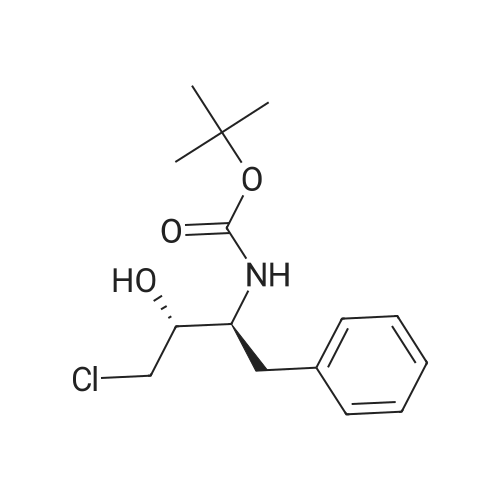

 For Research Only
For Research Only
 120K+ Compounds
120K+ Compounds
 Competitive Price
Competitive Price
 1-2 Day Shipping
1-2 Day Shipping






